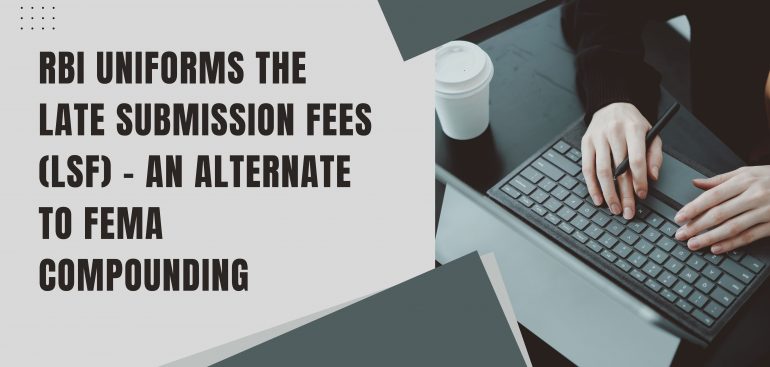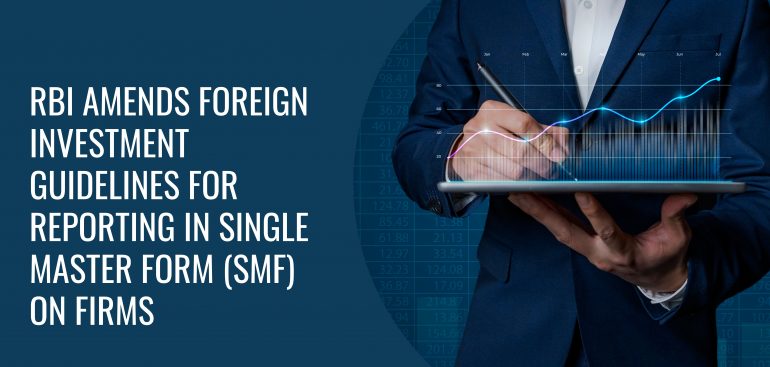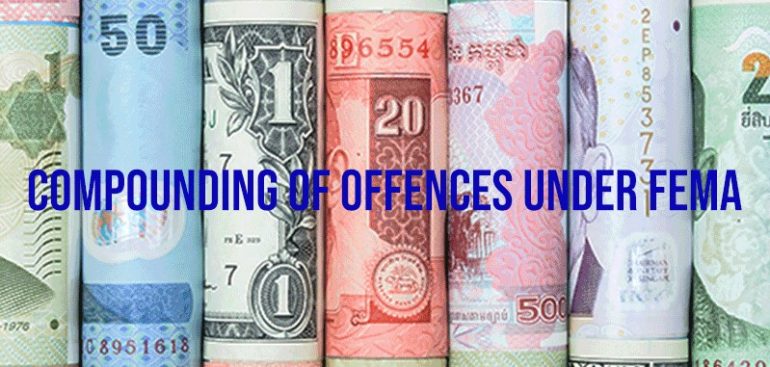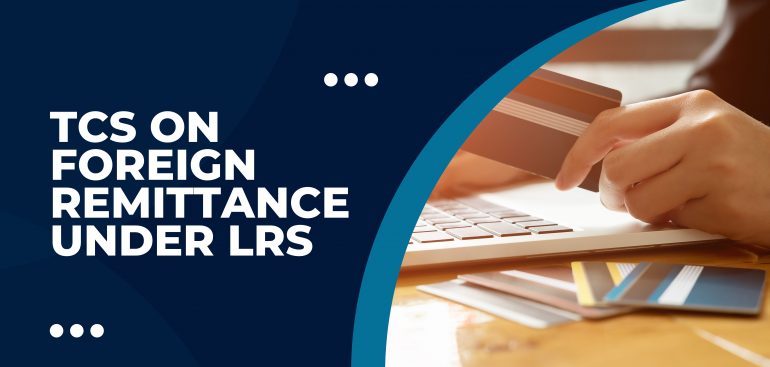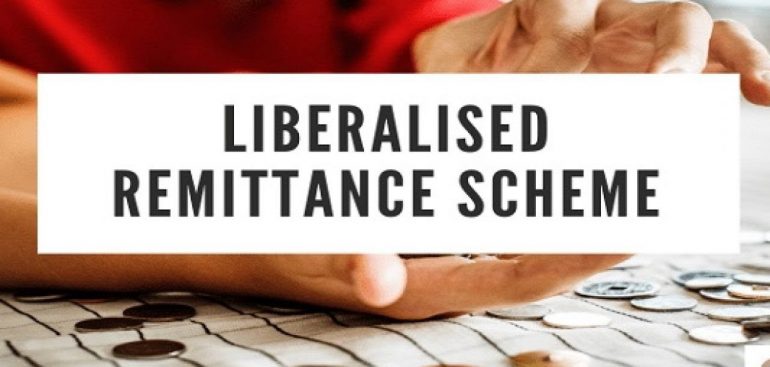Pubs within Sukhumvit area are fantastic towns and cities to get to know typical girls within the Bangkok, you can find those taverns within the Thong Lor, Ekkamai and Phrom Phong. Only a few girls tend to cam English but this region inside the your best bet. Koh San Roadway is additionally ok to own fulfilling Thai girls, if you are there are numerous backpackers around, there’s exactly as of several Thai girls.
Partnersuche Deluxe
Welche person auf der Recherche zu einem Lebensgefahrte im WWW ist, surft im Regelfall simultan uff mehreren Webseiten. Das erhoben Wafer Chance rapider den passenden Lebenspartner stoned aufspuren. Etliche Dienste Unkosten Bimbes & zusichern durch separat erstellte Matches den idealen Ehepartner. Fast alle Webseiten man sagt, sie seien gewiss kostenlose Angebote. Dies Der oder alternative Fake Silhouette sollte man in diesem fall allerdings Mittels beinhalten, solange man einander Welche folgenden Anwender anschaut. Dies gilt besonders aufwarts erotischen Portalen bei dieser Suche nachdem Sexkontakte.
Unser World Wide Web bietet jede Menge mehrere Anlass, um direktemang neue Volk uberblicken zugeknallt studieren. Im zuge dessen erhoht gegenseitig die Gunst der Stunde den passenden Lebenspartner zu auftreiben au?erordentlich.
Who’s Victoria Pedretti’s date inside 2021? Exactly what do we understand regarding the actress’ profession and love life? These are her name, she gathered far recognition and you may fame on account of this lady part for the new Netflix show The latest Haunting Off Hill House from inside the 2018. In addition to that, the woman is famous for the whole group of The Haunting (2018-2020). This lady perish-hard fans have indicated grand demand for knowing reasons for having this lady, getting it is this lady dating or the woman elite group life. More over, the woman early every day life is something this lady fans was curious to understand.
Which range from the fundamentals, due to the fact a celebrity, Victoria Pedretti spent some time working in various video and you may show. Surprisingly, a lot of this lady work is actually a primary struck. Here, we’ll safeguards everything about the lady industry too. While certainly the girl fans, go ahead to know about brand new rising question of new celebrity, Victoria Pedretti. You are quite surprised knowing who it is since the woman is plus on film business. So, why don’t we get a hold of exactly who Victoria Pedretti’s sweetheart for the 2021 is?
Early Lifetime Job
Victoria Pedretti, a famous Western celebrity, was created to your 23 February 1995. She grew up from inside the Philadelphia, Pennsylvania, United states. This present year, she turned into twenty six years old. Centered on the woman beginning few days, the zodiac sign is Aries. The information of her parents are not recognized, however, she actually is slightly alongside her or him. Speaking of the training details of the fresh actress, Victoria Pedretti attended Carnegie Mellon School of Drama Into the Pittsburgh. She pursued this lady graduation https://fansfan.com/category/free-videos/ from the exact same set having a qualification within the BFA. She along with pursued education from Pennsburg Senior high school inside the Fairless Hills in advance of one.
are a complete stranger conference program enabling its pages to meet visitors in addition to carry out disposable chatrooms having otherwise instead of passwords, show mass media documents such as photographs and you can clips. You get to correspond with visitors versus login, in the place of application, versus bots & instead spam. This is a lady friendly site with a lot of lady pages to talk which have. We work at performing an environment where you could socialize on the web maybe not relationship without membership. Don’t flirt with complete strangers on this website. Feel social & in charge as we is a clean boards website. You will find on the internet chatrooms getting intellectuals, forums to have editors, chatrooms for students and you will boards to speak having strangers to own stranger meetup.
About the Talk
A talk that can be used anyplace to the people platform. No matter what equipment you utilize often in case it is an android, an iphone 3gs, a desktop otherwise mac or even wise tv, brand new chat’s receptive design allows it go into a knowledgeable contour for the tool.
The Reserve Bank of India (“RBI”) vide A.P. (DIR Series) Circular No. 16 dated September 30, 20221 (“RBI Circular”) has revised the late submission fee (“LSF”) computation matrix for reporting delays under the Foreign Exchange Management Act, 1999 (“FEMA”), in order to bring uniformity in imposition of LSF across functions.
BACKGROUND
Practically, the reporting documentation of Foreign Investment (“FI”), External Commercial Borrowing (“ECB”) and Overseas Investment (“OI”) transactions involves a great deal of coordination amongst the multiple parties and the Authorised Dealer Bank (“AD Bank”), which may sometimes result in reporting of such transactions beyond the stipulated timeframes. While such reporting delays are mere procedural lapses, prior to introduction of LSF, the party in default had no other option but to undergo a cumbersome process of compounding to regularise such delays. This was a time consuming exercise and could take up to 6 months’ time to pay the penalty and obtain the order. Requiring a person to go for compounding to regularise the procedural lapses was an enormous administrative burden on the regulators. To address this, the RBI introduced LSF as an alternate mechanism. It was first introduced on November 07, 20172 for the reporting delays of FI and subsequently, for ECB and OI transactions w.e.f. January 16, 20193 and August 22, 2022 through the Foreign Exchange Management (Overseas Investment) Directions, 20224 (“OI Directions”), respectively.
LSF has been a great initiative to deal with procedural lapses in a much faster and efficient way. By easing the process for regularization, this has de-clogged the RBI compounding cell from such trivial matters and allowed the compounding authorities to focus on serious contraventions.
HOW DOES LSF WORKS?
LSF mechanism has laid down a simple process of paying a prescribed late fee to regularise reporting delays of FI, ECB and OI transactions. As a process, once the reporting of transaction (through Single Master Form (SMF) on RBI’s FIRMS portal5 for FI transactions and in physical form for ECB and OI transactions) is completed, in the event of delay in reporting, such cases shall be forwarded by AD Bank to the RBI. The RBI shall then condone the delay and issue a conditional acknowledgment subject to payment of LSF within a stipulated timeframe. LSF is levied as per the computation matrix. Final acknowledgment of reporting shall be issued only upon payment of LSF by the reporting party. The amount once paid as LSF is not refundable in any manner.
LSF payment is an additional facility for regularizing reporting delays without undergoing the compounding procedure. Hence, an option to undergo the compounding process is always available when the reporting party decides not to avail LSF facility. Importantly, the LSF applies only for the reporting delays, and contravention of any other provisions under the FEMA would still be subject to adjudication or compounding with the RBI.
NEW UNIFORMED LSF MATRIX
Prior to the RBI Circular, although LSF was applied for all the transactions, the manner of computation of LSF was not consistent across functions (i.e. FI, ECB and OI). While LSF was applied as a percentage of the amount involved for FI reporting delays, in case of ECB reporting delays, it was applied as a fixed amount which is linked to the period of delay occurred. Further, LSF which was recently applied for OI reporting delays under the OI Directions prescribed a different method of computation depending upon the nature of reporting involved.
In order to streamline and bring uniformity, the RBI Circular introduced a new uniformed LSF matrix (as below) (“New LSF”) which shall apply to all the reporting delays on or after September 30, 2022, across functions.
| Sr. No | Type of Reporting delays | LSF Amount (INR) |
| 1 | Form ODI Part-II/ APR, FCGPR (B), FLA Returns, Form OPI, evidence of investment or any other return which does not capture flows or any other periodical reporting | 7500 |
| 2 | FC-GPR, FCTRS, Form ESOP, Form LLP(I), Form LLP(II), Form CN, Form DI, Form InVi, Form ODI-Part I, Form ODI-Part III, Form FC, Form ECB, Form ECB-2, Revised Form ECB or any other return which captures flows or returns which capture reporting of non-fund transactions or any other transactional reporting | [7500 + (0.025% x A x n)] |
Notes:
“n” is the number of years of delay in submission rounded-upwards to the nearest month and expressed up to 2 decimal points.
“A” is the amount involved in the delayed reporting.
NRI SERVICES
info@nriservices.in
The Reserve Bank of India (RBI) vide Notification no. RBI/2022-23/160 A.P. (DIR Series) Circular No. 22, dated 04.01.2023 has amended the guidelines for reporting in SMF on FIRMS and issued a circular on Foreign Investment in India – Rationalisation of reporting in Single Master Form (SMF) on FIRMS Portal in exercise of power conferred under sections 10(4) and 11(1) of the Foreign Exchange Management Act, 1999 (42 of 1999) and are without prejudice to permissions/approvals, if any, required under any other law
RBI has introduced a Single Master Form (“SMF”) to integrate the reporting structure of various types of Foreign Investment in India. SMF would provide a facility for reporting total foreign investment in an Indian entity {as defined in Foreign Exchange Management (Transfer or issue of security by a person resident outside India) Regulations 2017, dated November 7, 2017}, as also investment by persons resident outside India in an Investment Vehicle
The following changes are being implemented with respect to the reporting of foreign investment in SMF on FIRMS portal:
- The forms submitted on the portal will be auto-acknowledged. The AD banks shall verify the same within five working days based on the uploaded documents, as specified.
- In cases of delayed reporting, the AD banks shall either advise the Late Submission Fee (LSF) to the applicants, which will be computed by the system or advise for compounding of contravention, as the case may be.
Auto-acknowledgement of SMF in FIRMS and online calculation of LSF
The forms submitted in FIRMS will now be processed as detailed below:
All forms submitted with the requisite documents will be auto-acknowledged on the FIRMS portal with a time stamp and an auto-generated e-mail will be sent to the applicant.
- The forms submitted within prescribed timelines, will be verified by the AD banks based on the uploaded mandatory documents and ensure that the same are in compliance with the extant guidelines.
- The system would identify the delay in reporting, if any.
- For forms filed with a delay less than or equal to three years, the AD banks will approve the same, subject to payment of LSF.
- The LSF will be computed by the system and an e-mail will be sent to the applicant and the concerned Regional Office (RO) of RBI specifying the amount and the timeline within which it is to be paid to the concerned RO of RBI.
- Once the LSF amount is realised, the concerned RO will update the status in the FIRMS portal and the updated status will be communicated to the applicant through a system generated e-mail, which can also be viewed in the FIRMS portal.
- The AD bank will approve the forms filed with a delay greater than three years, subject to compounding of contravention. The applicant may thereafter approach RBI with their application for compounding.
- The remarks of the AD Bank for rejection of forms, if any, will be communicated to the applicant through a system generated e-mail and the same can also be viewed in the FIRMS portal.
NRI Services
info@nriservices.inc
Pranav Singla
Introduction
The Foreign Exchange Management Act, 1999 (FEMA) plays a crucial role in regulating foreign exchange transactions in India. However, there may be instances when individuals or entities inadvertently or negligently contravene the provisions of FEMA. In such cases, seeking compounding of contraventions before the Enforcement Directorate (ED) can provide an opportunity to rectify the mistake and avoid severe penalties. This article aims to guide individuals and businesses on how to tackle FEMA compounding contraventions before the ED effectively.
Understanding FEMA Contraventions
Before diving into the compounding process, it is important to identify the contravention that occurred. Familiarize yourself with the provisions of FEMA and ascertain the nature and extent of the violation. This will help in assessing potential penalties and consequences associated with the contravention.
Seek Professional Guidance
Given the complexity of FEMA and its implications, it is advisable to seek professional assistance. Engage a legal professional or a qualified chartered accountant with expertise in FEMA and foreign exchange regulations. They can provide valuable guidance, help you understand the nuances of the compounding process, and ensure compliance with relevant regulations.
Prepare a Compounding Application
A well-drafted compounding application is essential to present your case effectively. Include the following key elements in your application:
- Detailed Facts: Provide a comprehensive account of the facts and circumstances surrounding the contravention. Include relevant dates, transactions, and parties involved.
- Specify FEMA Provisions Violated: Clearly state the specific provisions of FEMA that have been contravened. This demonstrates your awareness of the violation and shows a commitment to rectify it.
- Quantify the Contravention: Specify the monetary value or any other quantifiable aspect associated with the contravention. This helps in assessing the seriousness of the violation and determining the appropriate compounding fees.
- Reasons for Contravention: Provide a clear and honest explanation of why the contravention occurred. Highlight any mitigating factors or unintentional errors that contributed to the violation.
- Steps Taken for Rectification: Outline the actions taken to rectify the contravention promptly. This demonstrates your commitment to compliance and rectification of the mistake.
- Supporting Documents: Include all relevant documents, such as transaction records, contracts, correspondence, or any other evidence that supports your case. Make sure to provide documents requested by the ED.
Payment of Compounding Fees
Compounding fees must be paid along with the compounding application. The fees are determined based on the nature and severity of the contravention. It is crucial to ensure that the correct fees are paid as per the FEMA compounding guidelines. Failure to pay the appropriate fees can result in the rejection of the compounding application.
Follow-Up and Cooperation
After submitting the compounding application, actively cooperate with the ED throughout the process. Respond promptly to any queries or requests for additional information from the authorities. If required, attend hearings or meetings as scheduled. Maintaining open communication and demonstrating a cooperative attitude will positively impact the outcome of the compounding process.
Obtain the Compounding Order
If the ED accepts the compounding application, they will issue a compounding order. This order will specify the terms and conditions of the compounding. It is vital to carefully review and comply with the terms outlined in the order to avoid further legal consequences.
Conclusion
Tackling FEMA contraventions through compounding before the Enforcement Directorate is a crucial step towards rectifying mistakes and ensuring compliance. By following the outlined steps in this article, individuals and businesses can effectively navigate the compounding process. Remember to seek professional guidance, prepare a comprehensive compounding application, pay the prescribed fees, cooperate with the authorities, and comply with the terms of the compounding order. By doing so, you can address the contravention under FEMA and mitigate potential penalties while striving for regulatory compliance in foreign exchange transactions.
The Union Budget 2023 proposes a Tax Collection at Source (TCS) for foreign outward remittance under LRS (other than for Education and medical purpose) of 20% applicable from July 1, 2023. Before this proposal, the TCS of 5% was applicable on foreign outward remittances above INR 7 lakhs.
What is the meaning of TCS (Tax Collected at Source) ?
Tax Collected at Source (TCS) is an income tax, collected by the seller of specified goods, from the buyer. TCS is a concept where a person selling specific items is liable to collect tax from a buyer at a prescribed rate and deposit the same with the Government. Under the Liberalised Remittance Scheme (LRS), the Bank is required to collect TCS at the rate of 5% on the aggregate remittance amount exceeding Rs. 7 lakhs during a Financial Year before Budget 2023.
What is Liberalised Remittance Scheme (LRS) ?
The Liberalised Remittance Scheme (LRS) is part of the Foreign Exchange Management Act (FEMA) 1999 which lays down the guidelines for outward remittance from India. Under LRS, all resident individuals, including minors, are allowed to freely remit up to USD250,000 per financial year (April – March). This can be for any permissible current or capital account transaction, or a combination of both.
Budget 2023: TCS on Foreign Remittance Transactions under LRS
Finance minister, Nirmala Sitharaman has proposed changes in the TCS structure in Budget 2023, to be applicable from 1st July 2023 →
“For foreign remittances for other purposes under LRS and the purchase of overseas tour programs, the TCS rates will get increased to 20% from the previously applicable 5% from 1st July 2023.”
The TCS rates with the changes brought about in Finance Act 2023 are tabulated as under:
- Remittance for the purpose of any education [NO CHANGE]
| Old Position (up to 30.06.2023) | After Finance Act (from 01.07.2023) | |||
| Nature | Threshold | Rate | Threshold | Rate |
| If the amount being remitted out is a loan obtained from any financial institution as defined in section 80E | 7 lacs | 0.50% | 7 lacs | 0.50% |
| Remittance is not out of loan from a financial institution | 7 lacs | 5.00% | 7 lacs | 5.00% |
- Remittance for the purpose of any medical Treatment [NO CHANGE]
| Old Position (up to 30.06.2023) | After Finance Act (from 01.07.2023) | |||
| Nature | Threshold | Rate | Threshold | Rate |
| Remittance is for Medical Treatment | 7 lacs | 5.00% | 7 lacs | 5.00% |
- Sale of Overseas Tour Package
| Old Position (up to 30.06.2023) | After Finance Act (from 01.07.2023) | |||
| Nature | Threshold | Rate | Threshold | Rate |
| Remittance is for the purchase of a tour package | Nil | 5.00% | Nil | 20% |
- Any other remittance (for Bonds, Shares, Real Estate Gifts etc.)
| Old Position (up to 30.06.2023) | After Finance Act (from 01.07.2023) | |||
| Nature | Threshold | Rate | Threshold | Rate |
| Remittance is for any other purpose | 7 lacs | 5.00% | Nil | 20% |
How does this impact you from 1st July 2023?
- If you are converting INR to any other currency for the purpose of investment in listed equities or any other purpose: As per the newly proposed Budget 2023, the Bank is required to collect TCS at the rate of 20% on the aggregate remittance amount during a Financial Year. Example: An individual wants to remit and convert Rs. 10 Lakh to US Dollars. The bank would deduct a TCS of 20% on Rs. 10 Lakh. The TCS would be Rs. 2,00,000 in this case.
- If you are converting INR to any other currency for the purpose of an overseas tour package: As per the newly proposed Budget 2023, the Bank is required to collect TCS at the rate of 20% on the aggregate remittance amount during a Financial Year. Example: You want to convert Rs. 10 Lakh to US Dollars for spending on overseas tour/ travel etc. The bank would deduct a TCS of 20% on Rs. 10 Lakh. The TCS would be Rs. 2,00,000 in this case.
- For the purpose of overseas Education, and overseas medical treatment a TCS of 5% will be applicable for an aggregate amount in excess of INR 7 lacs being remitted.
CA Nipan Bansal (info@nriservces.in)
Pranav Singla
The Liberalised Remittance Scheme (LRS) is a scheme introduced by the Reserve Bank of India (RBI) in 2004. The scheme allows resident individuals to remit up to USD 2,50,000 per financial year (April-March) for any permitted current or capital account transaction or a combination of both. The scheme is not available to corporates, partnership firms, HUF, trusts, etc.
The LRS limit has been revised in stages consistent with prevailing macro and micro economic conditions.
From, till date, the LRS limit has been revised multiple times.
| Date of revision of limit | LIMIT (USD) |
| February 4, 2004 | 25,000 |
| December 20, 2006 | 50,000 |
| May 8, 2007 | 1,00,000 |
| September 26, 2007 | 2,00,000 |
| August 14, 2013 | 75,000 |
| June 3, 2014 | 1,25,000 |
| May 26, 2015 | 2,50,000 |
The LRS is available to all resident individuals, including minors. In the case of a remitter being a minor, the Form A2 must be countersigned by the minor’s natural guardian. Remittances under the scheme can be consolidated in respect of family members subject to individual family members complying with its terms and conditions. However, clubbing is not permitted by other family members for capital account transactions such as opening a bank account/investment if they are not the co-owners/co-partners of the overseas bank account/investment.
Remittances for the purchase of property shall be in accordance with the provisions under paragraph 6(ii). Further, a resident cannot gift to another resident, in foreign currency, for the credit of the latter’s foreign currency account held abroad under LRS.
All other transactions that are otherwise not permissible under the Foreign Exchange Management Act (FEMA) and those in the nature of remittance for margins or margin calls to overseas exchanges/overseas counterparty are not allowed under the scheme.
The permissible capital account transactions by an individual under LRS are opening a foreign currency account abroad with a bank; acquisition of immovable property abroad; Overseas Direct Investment (ODI) and Overseas Portfolio Investment (OPI), in accordance with the provisions contained in Foreign Exchange Management (Overseas Investment) Rules, 2022, Foreign Exchange Management (Overseas Investment) Regulations, 2022 and Foreign Exchange Management (Overseas Investment) Directions, 2022; and extending loans including loans in Indian Rupees to Non-resident Indians (NRIs) who are relatives as defined in Companies Act, 2013.
The limit of USD 2,50,000 per financial year (FY) under the scheme also includes/subsumes remittances for current account transactions available to resident individuals under Para 1 of Schedule III to Foreign Exchange Management (Current Account Transactions) Amendment Rules, 2015 dated May 26, 2015. Release of foreign exchange exceeding USD 2,50,000 requires prior permission from the Reserve Bank of India.
For private visits abroad, other than to Nepal and Bhutan, any resident individual can obtain foreign exchange up to an aggregate amount of USD 2,50,000 from an Authorised Dealer or FFMC in any one financial year irrespective of the number of visits undertaken during the year. Further, all tour-related expenses including cost of rail/road/water transportation; cost of Euro Rail; passes/tickets, etc. outside India; and overseas hotel/lodging expenses shall be subsumed under the LRS limit. The tour operator can collect this amount either in Indian rupees or in foreign currency from the resident traveller.
Any resident individual may remit up-to USD 2,50,000 in one FY as a gift to a person residing outside India or as a donation to an organization outside India. A person going abroad for employment can draw foreign exchange up to USD 2,50,000 per FY from any Authorised Dealer in India. A person wanting to emigrate can draw foreign exchange from AD Category I bank and AD Category II up to the amount prescribed by the country of emigration or USD 250,000. Remittance of any amount of foreign exchange outside India in excess of this limit may be allowed only towards meeting incidental expenses in the country of immigration and not for earning points or credits to become eligible for immigration by way of overseas investments in government bonds; land; commercial enterprise; etc.
Context
Non-resident Indians (NRIs) and foreign investors enjoy low tax rates on investments made in the International Financial Services Centre (IFSC) in the Gujarat International Finance Tec-City (GIFT) located at Gandhinagar, Gujarat.
A large number of Alternative Investment Funds (AIFs) have also sprung up in the GIFT city, catering to NRIs.
About
Investing in alternative investment funds (AIFs):

Investing in derivatives:

IFSC and resident Indians:
- Resident Indians have not been given any tax breaks for investing through the IFSC.
- They can remit money to the IFSC through the Liberalised Remittance Scheme (LRS) of the RBI. However, they can only invest in securities issued by entities outside India.
- Indian residents must also report these holdings in the foreign assets schedule of the income tax return.
- Derivative trading is not permitted under LRS.
What is International Financial Services Centre?
- An international financial services centre caters to customers outside the jurisdiction of the domestic economy, dealing with flows of finance, financial products and services across borders.
- Gujarat International Finance Tec-City Co. Ltd is being developed as the country’s first international financial services centre (IFSC)
What are the services an IFSC can provide?
- Fund-raising services for individuals, corporations and governments
- Asset management and global portfolio diversification is undertaken by pension funds, insurance companies and mutual funds
- Wealth management
- Global tax management and cross-border tax liability optimization, which provides a business opportunity for financial intermediaries, accountants and law firms.
- Global and regional corporate treasury management operations that involve fund-raising, liquidity investment and management and asset-liability matching
- Risk management operations such as insurance and reinsurance
- Merger and acquisition activities among trans-national corporations

